Czech Beef Goulash (Hovězí Guláš) is a thick stew made with beef, onions and spices. Goulash is popular throughout Central Europe, but this version is traditionally Czech.
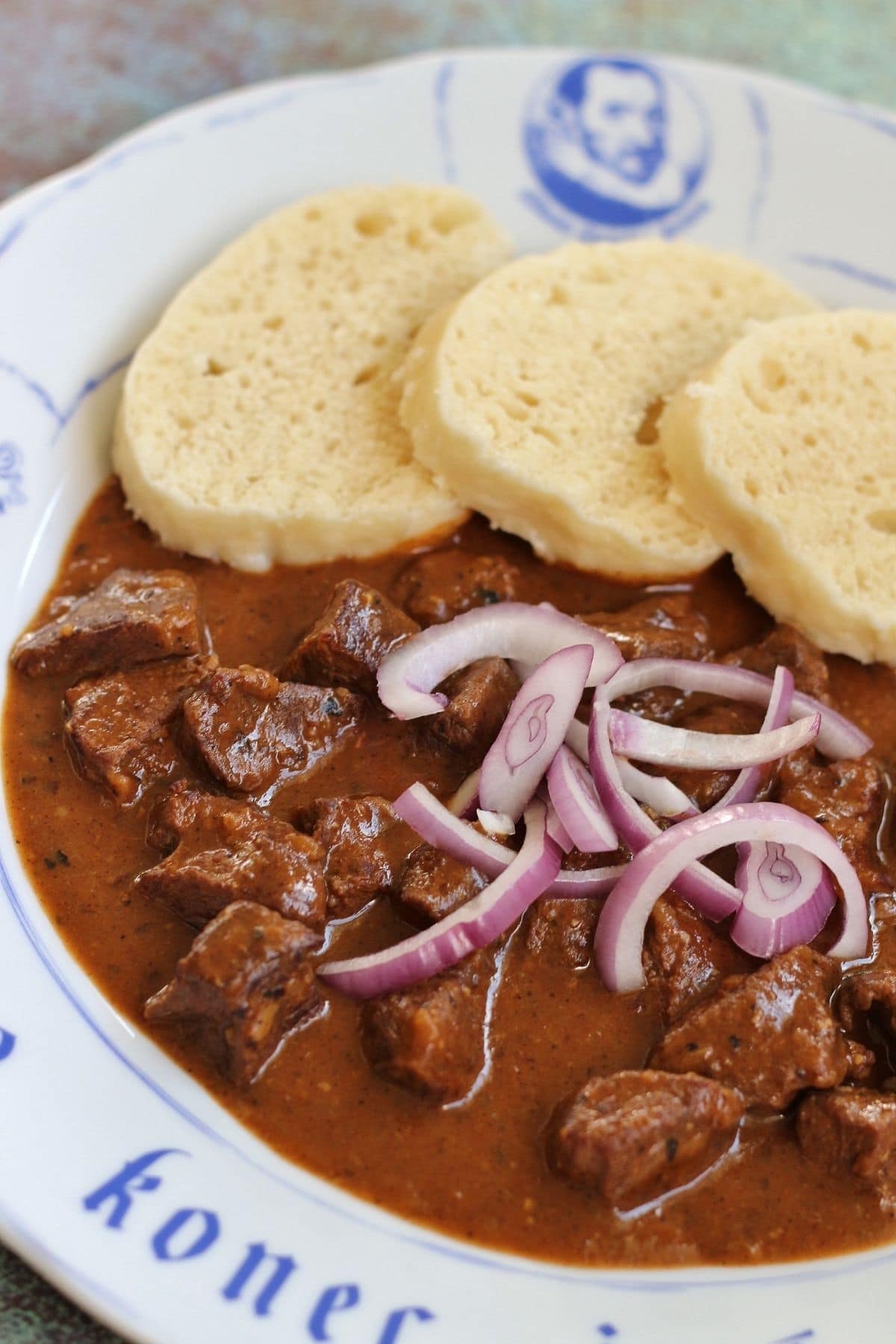
Goulash is prevalent in many variations throughout Central Europe. The most famous version of goulash comes from Hungary. It's a thin soup with meat, peppers, potatoes, and lots and lots of paprika. Many recipes for Hungarian goulash include thickeners, but the original is rather simple and isn't usually thickened.
Meanwhile the Czechs have their own version of goulash. Czech beef goulash is called český guláš (Czech goulash) or hovězí guláš (beef goulash) in its homeland. It's a staple on pub menus throughout the Czech Republic where it is often served topped with sliced onion, with simple boiled dumplings on the side, and accompanied by Pilsner beer, the Czech drink of choice.
Czech goulash is a thick stew made with beef, onions, and seasonings. The ingredient list is rather short, but it's big on flavor! I sampled traditional beef and non-traditional wild boar Czech goulash dishes when I visited the Czech Republic. From the very first bite of unctuous meat in a rich, thick, brown sauce I knew I wanted to recreate it myself.
I even purchased a very special plate as a souvenir in Kutná Hora with plans to serve my homemade goulash atop it. It's from a restaurant called Restaurace Dačický, named after 16th century Czech writer Mikuláš Dačický.
The phrase along the edge of the plate reads “Všecko konec jmá a jelito dva” which roughly translates to “Everything has an end but the sausage has two ends.” I can't think of a better way to serve homemade Czech food than on a fun and playful dish like this with actual Czech writing on it!
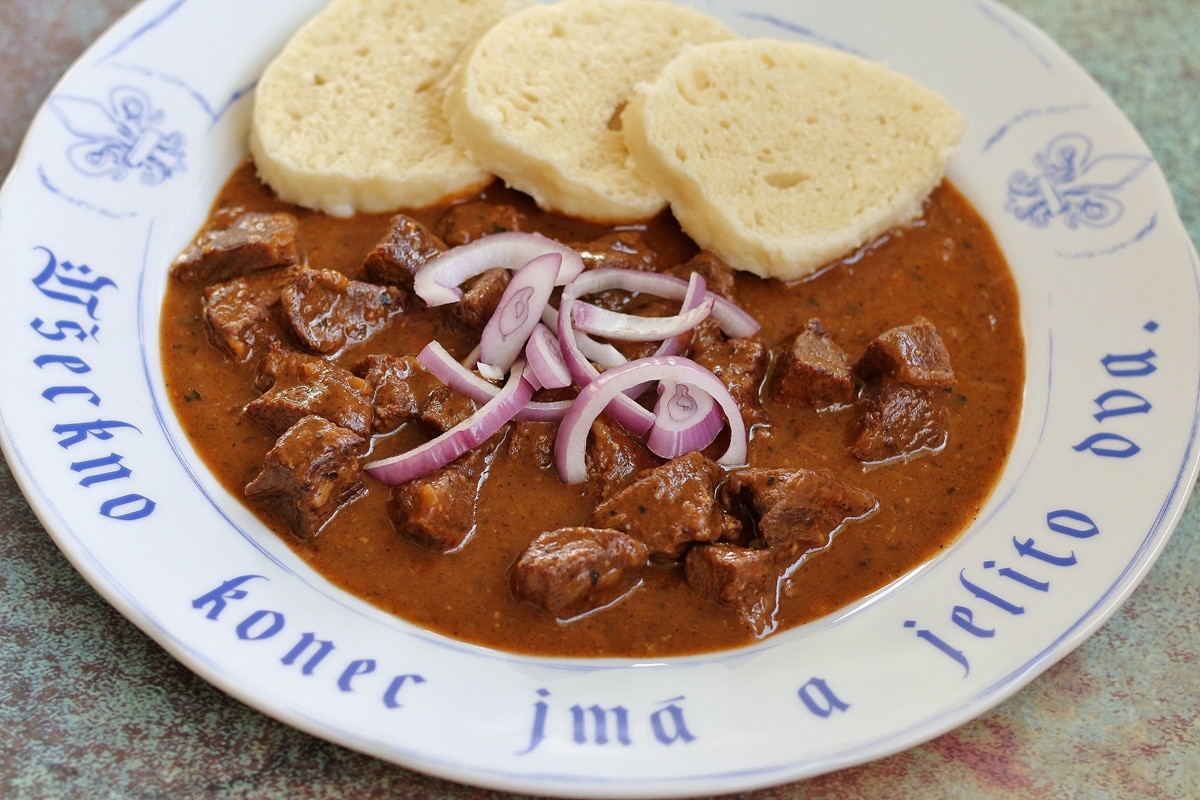
Ingredient notes
To make this Czech goulash you will need stew beef. This is a general term for different cuts of beef that are good for stewing. You can often even purchase "stew beef" in supermarkets. It's already cut into small pieces, but they are usually uneven in size, and if you do this you should plan on cutting the meat further into approximately 1-inch cubes.
If you want to cut your beef cubes from a larger cut of meat, you can try chuck or round because both are good for slow-cooked dishes. Beef round has various sub-cuts include top round, bottom round, and eye of round. Any of them would be fine for this recipe.
Dried marjoram is a common ingredient in Czech cooking, but you can use dried oregano as a substitution if needed.
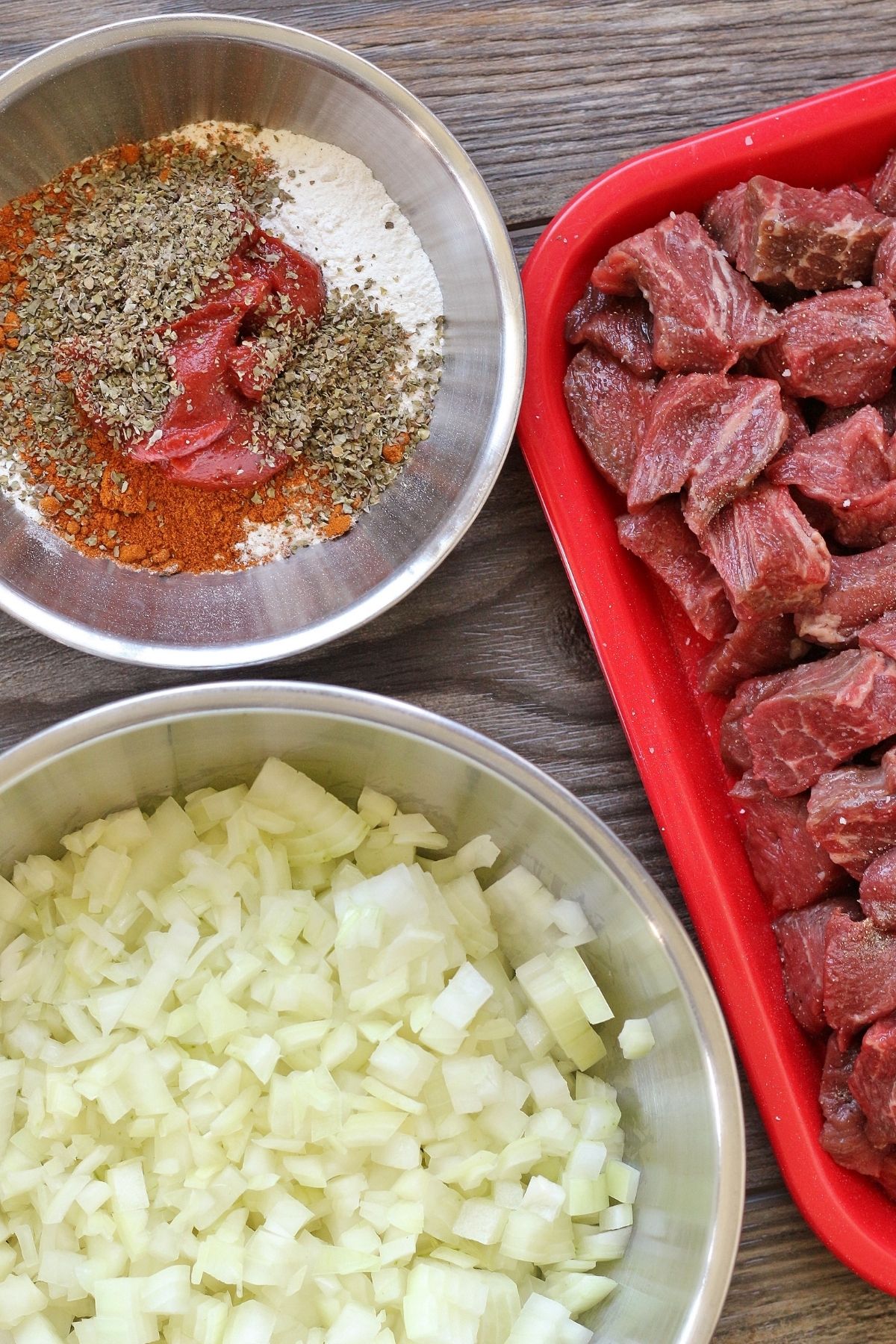
How to make it
Cut the beef into 1-inch pieces, and season with salt and pepper. Heat neutral oil like vegetable oil in a large pot over medium-high heat. I like using an enameled cast iron Le Creuset French (Dutch) oven for this. The 5.5 quart size is great for this recipe.
Brown the meat in batches for about 3 to 5 minutes per batch (PHOTOS 1-2). Lower the heat if the meat browns too fast. You’ll likely need to do about 5 batches if you’re using a 10-inch wide pot like the one I suggested.
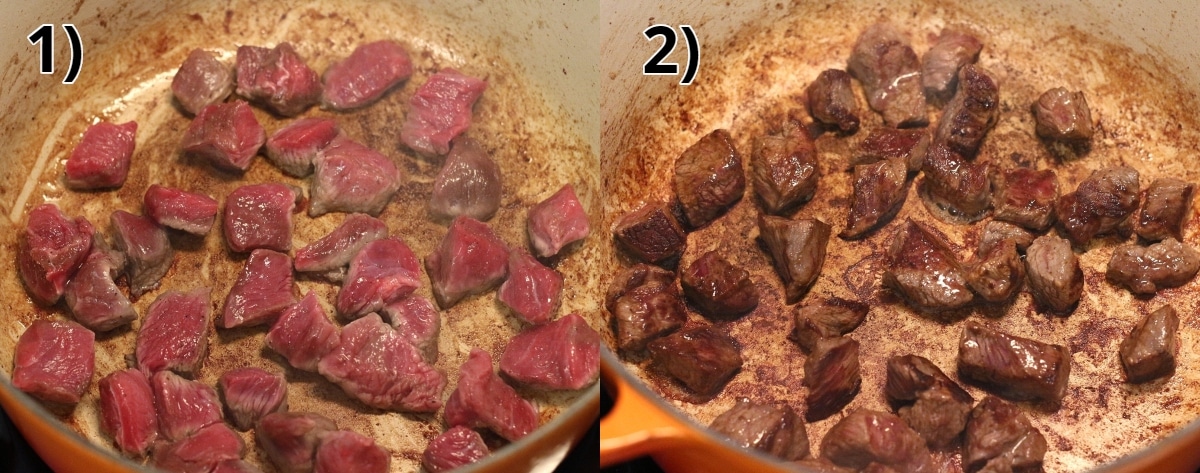
Set the seared meat aside as you complete each batch. Depending on the type of pan you use you may need to add a little oil in between batches, but it's not really necessary in a Le Creuset.
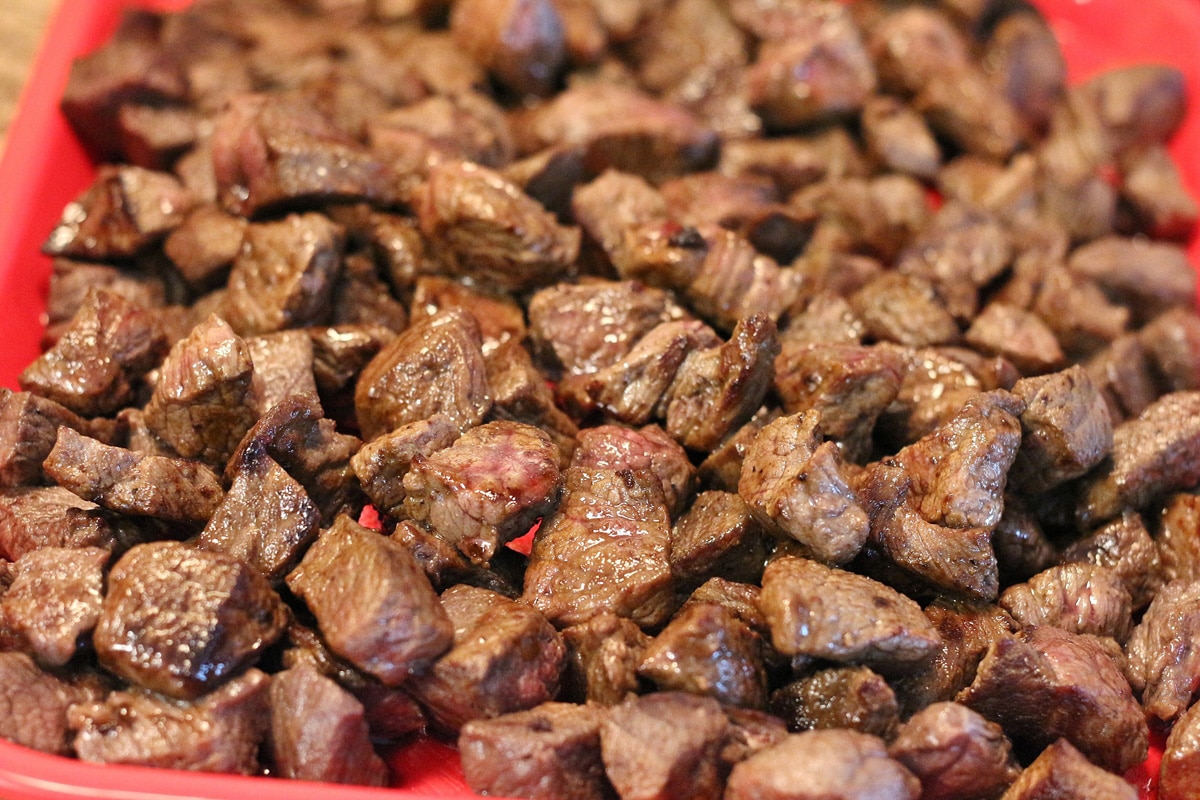
Add onions to the empty pot and cook until soft, about 5 to 7 minutes (PHOTO 3-4). Next, add flour, tomato paste, paprika, garlic, and dried marjoram. Stir and cook for 1 minute (PHOTO 5), then add the water, stirring to dissolve the tomato paste and flour, and scraping up any of the fond (the dark brown residue from searing the beef) still left on the bottom of the pan (PHOTO 6).
Return the seared beef and any residual juices to the pan (PHOTO 7). Season with salt and pepper, bring to a boil, then lower the heat and simmer covered for 1 ½ hours. Then uncover and continue to simmer for another 30 minutes until the beef is fork tender, and the liquid has thickened (PHOTO 8). Adjust the seasoning if necessary.
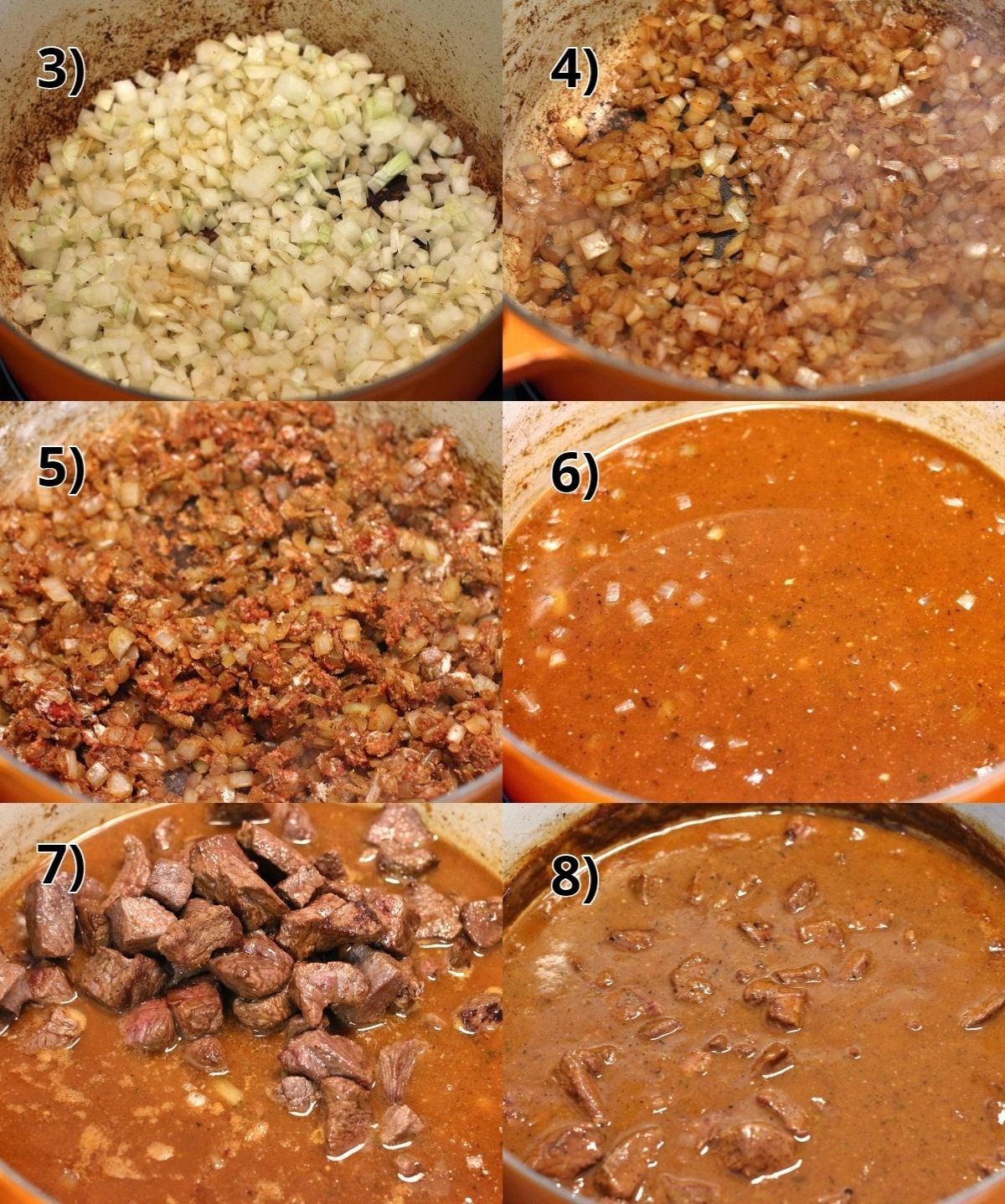
Although you may be tempted to, don't serve this Czech goulash in a deep bowl. Serve on a flat plate with a slight lip around the edge, topped with sliced onion for garnish, and a few slices of Czech dumplings on the side to soak up the incredible sauce.
Please scroll to the bottom of the post for the full recipe (in a printable recipe card) including ingredient amounts and detailed instructions.
Storing and reheating instructions
Store leftover Czech goulash in covered containers in the refrigerator for up to 4 days or freeze for up to 3 months for best quality. Thaw frozen goulash completely in the refrigerator before reheating.
Reheat goulash over gentle heat, stirring occasionally, and thin it back out with a little water if has thickened too much.
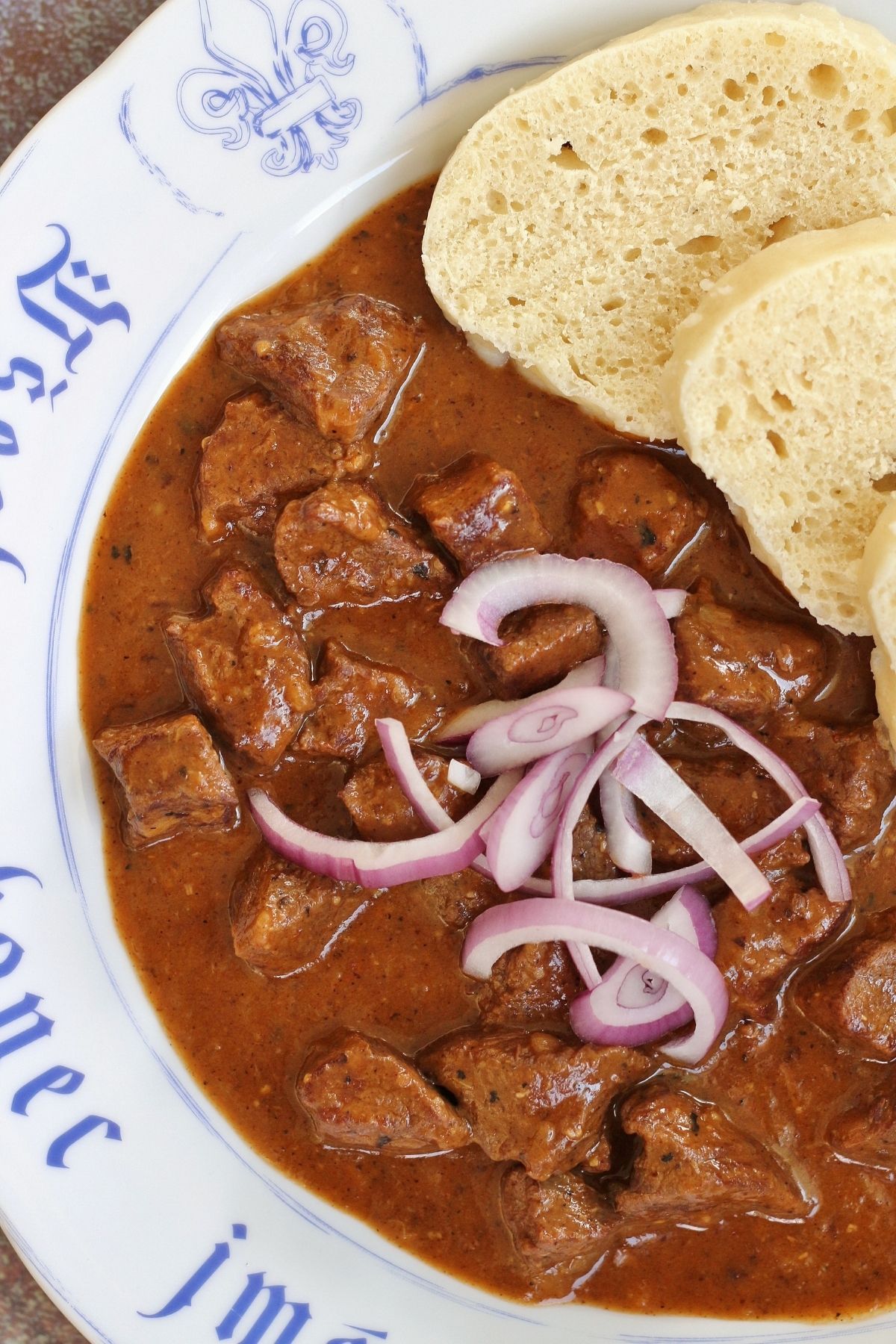
Other recipes you may like
- Česnečka (Czech Garlic Soup aka Hangover Soup)
- Nakládaný Hermelín (Czech Marinated Cheese)
- Beef Bourguignon (Burgundy Beef Stew)
- Chicken and Dumplings
- Tas Kebab (Persian Beef Stew)
- Giouvetsi (Greek Beef Stew and Orzo Casserole)
- Burmese Beef Curry with Potatoes
- Taiwanese Beef Noodle Soup
- Browse all Soup and Stew Recipes
- Browse all Meat Recipes
Have you ever tried Czech goulash? It's so comforting and totally perfect for fall and winter, especially when paired with homemade Czech dumplings! Luckily both recipes can be made in advance and reheated, so you can serve up an authentic Czech meal whenever the craving hits. And don't forget the Pilsner 😉
This Czech beef goulash is exactly like the one I enjoyed in Prague! I'm very pleased with the way this recipe turned out, and I hope you enjoy it as much as my family does.

Tried this recipe? Please leave a star ⭐️⭐️⭐️⭐️⭐️ rating in the recipe card below and/or a review in the comments section further down the page. You can also follow me on social media on Facebook, Instagram, and Pinterest!
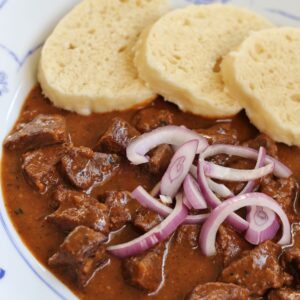
Hovězí Guláš (Czech Beef Goulash)
Ingredients
- 3 to 3 ¼ pounds beef stew meat (chuck or round), cut into 1-inch cubes
- Kosher salt and freshly ground black pepper
- 1 tablespoon vegetable oil, or as needed
- 2 large onions, finely chopped
- 5 tablespoons all-purpose flour
- 3 tablespoons tomato paste
- 2 tablespoons sweet paprika
- 4 cloves garlic, minced
- 2 teaspoons dried marjoram (dried oregano is not the same but is an acceptable substitute)
- 4 cups water
- Thinly sliced red or white onion, to garnish
Instructions
- Season beef with salt and pepper. Heat oil in a large pot over medium-high heat. Brown the meat in batches for about 3 to 5 minutes per batch. You’ll likely need to do about 5 batches if you’re using a 10-inch wide pot. Set the seared meat aside as you complete each batch. If you are using a cast iron pan (like an enameled Le Creuset French oven) it will retain heat extra well, and you may want to lower the heat to medium partway through the searing process if the meat is browning too fast.
- Add onions to the empty pot and cook until soft, about 5 to 7 minutes. Next, add flour, tomato paste, paprika, garlic, and dried marjoram. Stir and cook for 1 minute, then add the water, stirring to dissolve the tomato paste and flour, and scraping up any of the fond (the dark brown residue from searing the beef) still left on the bottom of the pan.
- Return the seared beef and any residual juices to the pan. Season with salt and pepper, bring to a boil, then lower the heat and simmer covered for 1 ½ hours, then uncover and continue to simmer for another 30 minutes until the beef is fork tender, and the liquid has thickened. Adjust seasoning if necessary.
- Serve on a flat plate with a slight lip around the edge, topped with sliced onion for garnish, and a few slices of Czech dumplings or bread on the side to soak up the sauce.
Notes
- Store leftover Czech goulash in covered containers in the refrigerator for up to 4 days or freeze for up to 3 months for best quality. Thaw frozen goulash completely in the refrigerator before reheating.
- Reheat goulash over gentle heat, stirring occasionally, and thin it back out with a little water if it has thickened too much.
Nutrition
*All nutritional information is based on third-party calculations and should be considered estimates. Actual nutritional content will vary with brands used, measuring methods, portion sizes and more.*


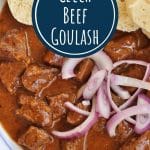
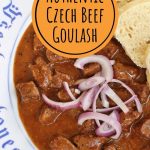
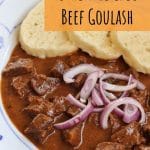
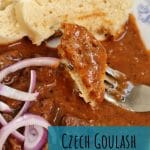

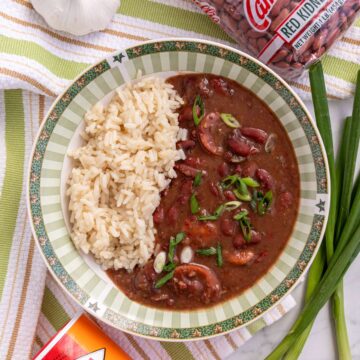



Jennifer Zastrow says
This was sooo good! Finding recipes from my Czech ancestry led me to it. Thank you!